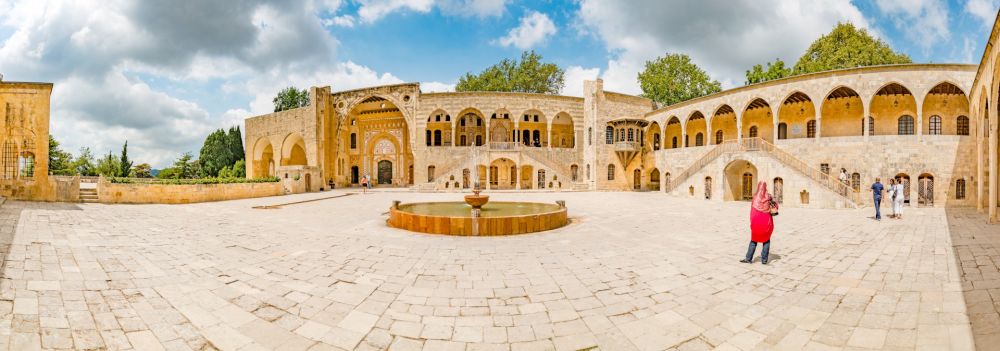

The history of tourism in Lebanon is as rich and varied as the country itself. Lebanon, often referred to as the crossroads of the Middle East, has been a nexus of culture and history that has drawn travelers and scholars alike for centuries. Its cities are a tapestry of different civilizations from the Phoenicians to the Romans, the Arabs to the Ottomans.
Tourism in Lebanon experienced a golden age in the 1960s and early 1970s, when Beirut was known as the "Paris of the Middle East." Visitors were lured by Lebanon’s historial sites, cultural diversity, renowned hospitality, and a vibrant nightlife. Despite subsequent periods of conflict which impacted the tourism industry, Lebanon has continually worked to rebuild and revitalize its reputation as a prime tourist destination.
Beiteddine Palace, a landmark of Lebanese heritage, is an exemplary site that speaks volumes of the historical significance and the architectural splendor the country holds. This 19th-century palace complex, set in the Chouf Mountains, showcases the best of Lebanese architecture with its ornate detailing, traditional stone mosaics, and expansive gardens.
Construction of Beiteddine Palace began in 1788 by Emir Bashir Shihab II who ruled Mount Lebanon. It took about 30 years to complete. The palace encompasses two large courtyards, beautiful gardens, and opulent living quarters that were once used as administrative offices, guest rooms, and hammams. Over the years, it has served various functions from being the residence of the Lebanese President in the summer to hosting important cultural events like the Beiteddine Festival which attracts visitors internationally.
In recent times, Lebanon has been focusing on sustainable tourism, aiming to protect and preserve its natural and cultural landscapes. With the increase in environmental awareness, ecotourism is gaining traction, where tourists can engage in activities like hiking in the Cedars of God, a UNESCO World Heritage Site, or visiting organic farms in the Bekaa Valley.
Furthermore, Lebanon is also tapping into the potential of experiential travel, where tourists are looking for authentic experiences. This includes food tours in Beirut’s bustling markets, winery tours in the renowned wine region of Batroun, and heritage walks through ancient cities like Byblos and Sidon. Social media and influencer marketing have played a significant role in this, bringing attention to Lebanon’s hidden gems.
Beiteddine Palace with its timeless allure stands as a testament to this nation's resilient spirit, attracting history buffs, architecture enthusiasts, and culture seekers. It plays an important role in both the preservation of Lebanese heritage and the future of the country's tourism. As one explores the intricately decorated halls and lush gardens, they not only witness a piece of Lebanese history but also participate in the living narrative that will define Lebanon’s tourism for years to come.
Lebanon's tourism sector continues to evolve, with a clear trend towards offering immersive and sustainable experiences that honor the country’s rich history and cultural fabric. Beiteddine Palace remains a cornerstone in this landscape, a must-visit for any traveler looking to delve deep into the heart of the Middle East.